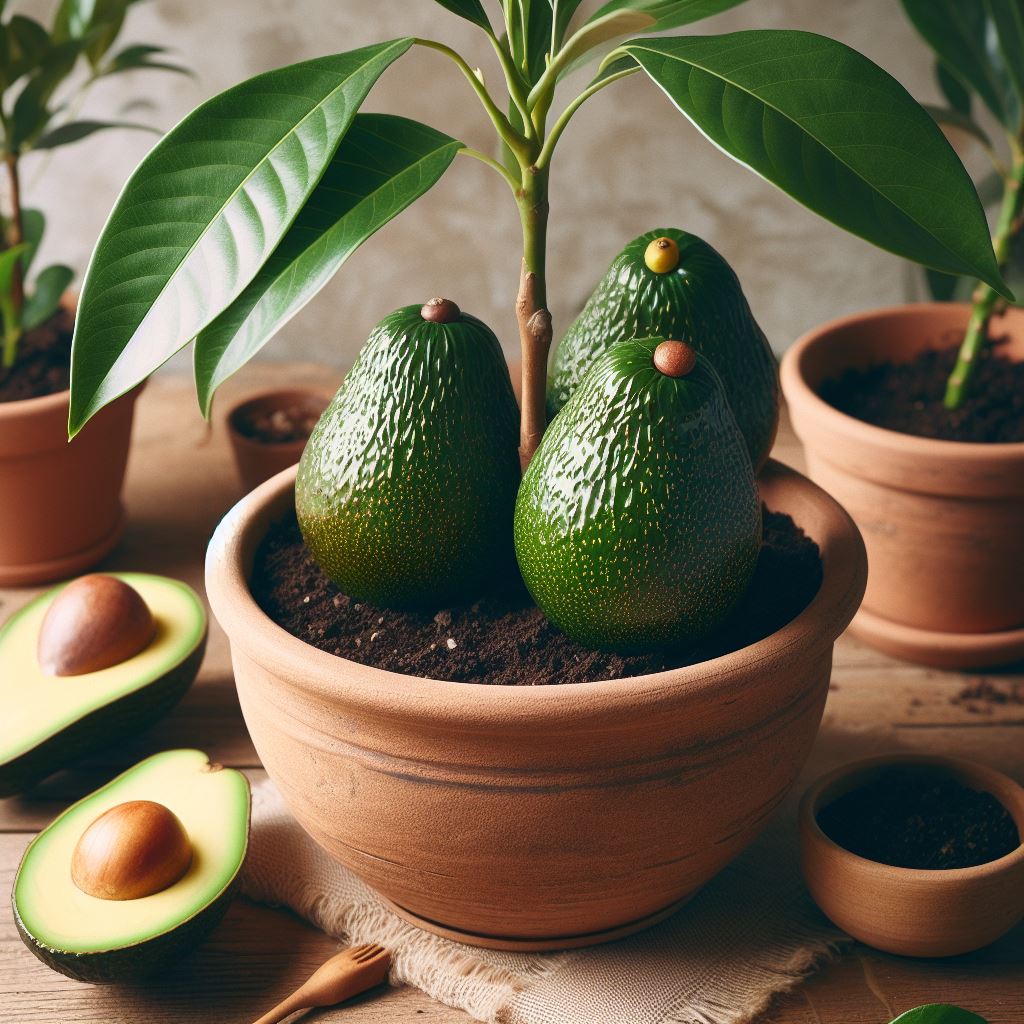"Mastering Avocado Care: Solutions to Common Plant Problems"
Learn to care for your avocado plant! Discover why leaves turn yellow and how to fix it. Get expert tips to keep your plant healthy and vibrant.
Avocado Plant Care Guide

Avocados are not just delicious fruits; they also make for beautiful and rewarding houseplants. Whether you're growing them for their creamy goodness or simply for their lush foliage, understanding their care needs is essential for success. Here's a comprehensive guide on how to care for your avocado plants:
Avocado Plant Care Guide
Avocado plants are renowned for their ease of care, making them an excellent choice for both experienced gardeners and those new to plant care. Here's what you need to know to keep your avocado plants thriving:
Condition Requirements for Avocado Plants
Water and Hardiness:

Avocado plants, native to subtropical and tropical regions, thrive in warmer climates with temperatures ranging from 16-29°C. While they can tolerate temperatures as low as -2°C, it's advisable to bring them indoors during colder spells. Their adaptability allows them to adjust their bloom period according to environmental conditions, making them suitable for both outdoor gardens and well-maintained indoor trees. Proper drainage and avoiding overwatering are crucial for their health and vigor.
Sunlight:

Avocado plants require full sun exposure to flourish, although they can tolerate some partial shade. Placing them near a sunny window indoors can suffice, although indoor-grown avocados may not produce edible fruits. Lack of sufficient sunlight can hinder growth and result in dull foliage. Adequate sunlight is also essential for enhancing the flavor of leaves, as seen in the case of Redbay (Persea borbonia).
Soil:

Avocado plants thrive in light, well-draining soil with a slightly acidic pH of 5.1-7.5. Heavy clay soils should be avoided as they can lead to waterlogging. Instead, loamy soil with a mulch top layer is preferred to enhance soil quality and promote healthy growth. While avocados can survive in nutrient-poor conditions, enriching the soil with organic matter can further support their development.
Watering:

Avocado plants require moderate watering and are sensitive to overwatering, which can damage their shallow roots. It's advisable to check the soil moisture weekly and water only when the top layer is dry. Adjust watering frequency based on weather conditions, reducing watering after rainfall to prevent waterlogged soil.
Fertilization:

Avocado plants are slow-growing and generally do not require frequent fertilization. Nutrient-rich soil supplemented with occasional nitrogen-rich, slow-release fertilizer in spring and summer can encourage growth. However, fertilizer should be used sparingly to avoid overfeeding the plant.
Common Problems with Avocado Plants
Yellowing Leaves:
If you notice the leaves of your avocado plant turning yellow, but there are no signs of aphids present, it's likely due to environmental factors. This could be caused by either overwatering or underwatering. To remedy this, adjust your watering frequency according to the weather conditions. With proper watering, your plant should recover and begin to exhibit healthy growth within a few weeks.
Black Powder on Leaves:
The presence of a black, powdery substance on the leaves of your avocado plant may indicate an infestation of aphids. Aphids secrete a sugary substance known as honeydew, which can attract mold, resulting in the black sooty mold you see. To address this issue, gently wipe the affected leaves with warm, soapy water to remove both the aphids and the mold. You may need to repeat this process for several days and consider using an aphid killer if the infestation persists until your avocado plant is free from aphids. Regular monitoring can help prevent future infestations and ensure the health of your plant.
Also Read : Citrus Leaf Curl and Leaf Miner Control in Your Garden
Conclusion :
While avocado plants are generally low-maintenance and resilient, encountering occasional issues like yellowing leaves or aphid infestations is not uncommon. By understanding the underlying causes of these problems and taking appropriate corrective measures, you can effectively address them and ensure the continued health and vitality of your avocado plant.
Regular monitoring of environmental conditions, such as watering frequency and sunlight exposure, is key to preventing and mitigating issues like yellowing leaves. Adjusting care routines in response to changes in weather and seasonal conditions can help maintain optimal growing conditions for your avocado plant.
Similarly, promptly identifying and addressing pest infestations, such as aphids, is essential to prevent further damage to your plant. By employing gentle yet effective methods, such as washing affected leaves with soapy water, and using targeted treatments when necessary, you can effectively manage pests and protect the overall health of your avocado plant.
With proper care and attention, your avocado plant can thrive and potentially reward you with a bountiful harvest of delicious fruits. By incorporating these insights into your plant care routine, you can enjoy the beauty and benefits of growing avocados at home for years to come.
